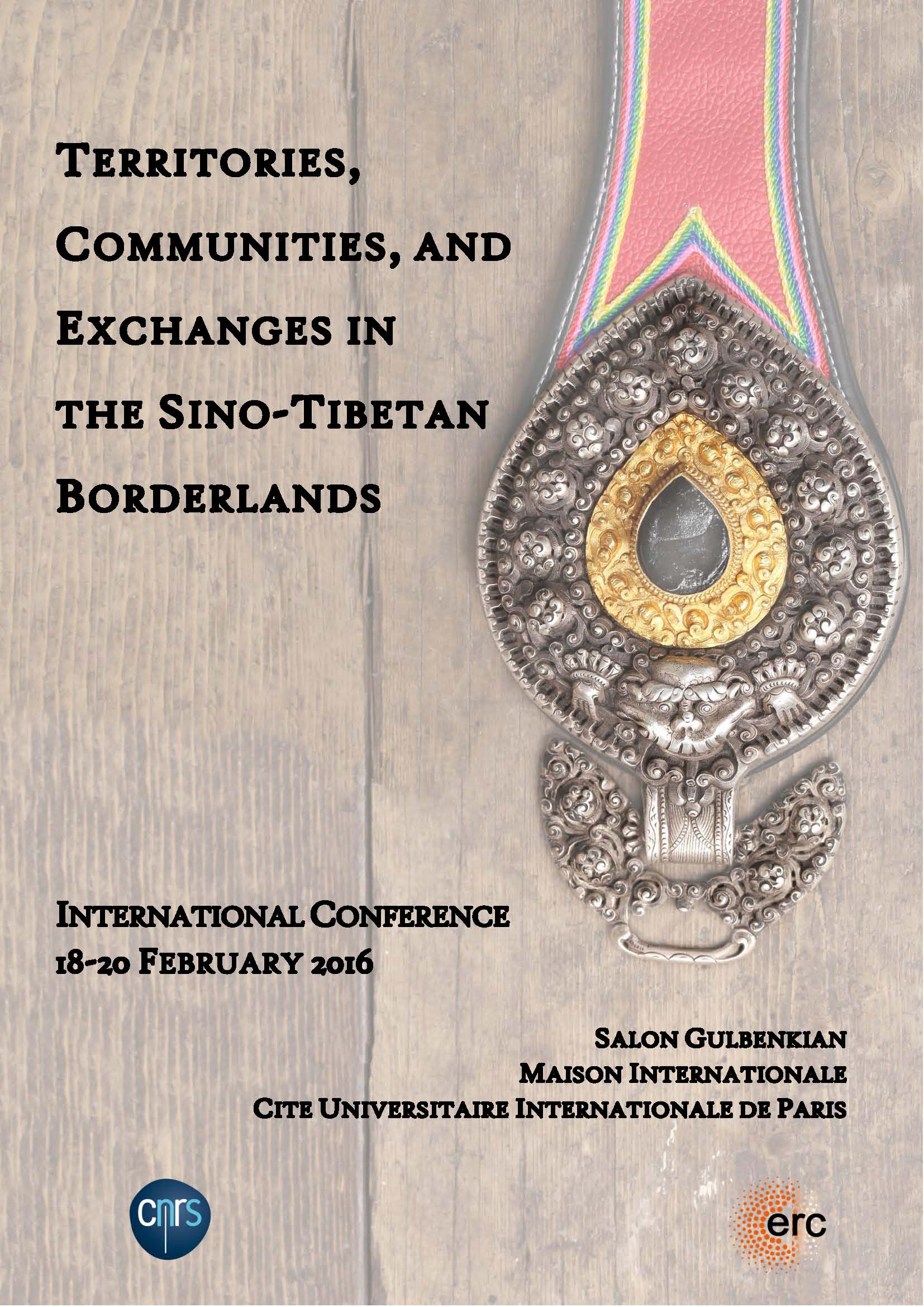Notice
Elizabeth Reynolds (Columbia University), " Monasteries, Merchants, and Long Distance Trade: The Economic Power of Tibetan Monasteries in Northern Kham (1900-1959) "
- document 1 document 2 document 3
- niveau 1 niveau 2 niveau 3
Descriptif
Pre-1959 Tibet was not a “closed off land” as is often assumed, but a place of dynamic economic structures and a diverse body of economic actors. The Trehor region, an area located in modern day northern Kardze Prefecture, was a center of trade, and due to its proximity to Sichuan and to Lhasa, the route through the Trehor area became a primary trade and communication route during the first half of the twientieth century. The Younghusband expedition (1903-1904), instigated by British India, and the forceful colonizing projects of General Zhao Erfeng (1908-1911) of the Qing, catalyzed new economic structures and strengthened long distance commercial ties between Tibet, China, and British India. The influx of goods and multiple currencies into Kham had a direct influence on Tibetan monasteries in the Trehor region. According to the Kardze Prefecture Gazetteer, in 1947, the monasteries and their “monastery merchants” (simiao shang) controlled roughly 60% to 70% percent of commercial pursuits in the Kham area. Monasteries in the Trehor area were able to take advantage of economic networks by stationing their monastic merchants throughout China, Tibet, and possibly India. They maintained sophisticated economic bureaucracies that were managed by high level monks with both business acumen and religious clout. Monasteries furthermore acted as money lenders, controlled a monopoly on tea imports in the area, imported and traded British Indian products, and some even printed their own paper currency which circulated inside and outside the monastery. By utilizing Chinese gazetteers, investigative reports from the 1950s as well as later Tibetan language surveys and a Tibetan language monastic history, this paper focuses on the Trehor area, paying particular attention to three Geluk monasteries Dargye, Kardze, and Drango. Overall, this paper investigates economic power of monasteries and demonstrates how monasteries maintained strong economic agency into the first decade of Communist rule.
International conference “Territories, Communities, and Exchanges in the Sino-Tibetan Kham Borderlands,” Februray 18-20, 2016. This conference is an outcome of a collaborative ERC-funded research project (Starting grant no. 283870).
For more information, please visit the project's Website: http://kham.cnrs.fr
Dans la même collection
-
John Bray, "French Catholic Missions and Sino-Tibetan Trade: Local Networks and International Enter…
The Missions Étrangères de Paris (MEP) sent their first missionary on an exploratory mission to the Sino-Tibetan borderlands in 1847, and they retained a presence in the region until 1952. Together
-
C. Pat Giersch (Wellesley College), "Patterns of Inclusion and Exclusion Along Twentieth-Century Ch…
In recent years, increasingly sophisticated work has traced the remarkable changes in early twentieth-century state-building along China's southwestern and Tibetan borderlands. During this same period
-
Lucia Galli (University of Oxford), "The Price of Enlightenment: The Travel Account of Kha stag ʼDz…
Frontier territories characterised by intense socio-economic, political, and cultural inter-actions, in the mid-nineteenth century the easternmost fringes of the Tibetan plateau saw the rise of the
-
Chen Bo (Sichuan University), “House Society” Revisited "
In this paper, I will begin by considering the concept of “house society” and its applicability to Southwest China. I ask the question of why no scholar, Levi-Strauss included since he originally
-
Eric Mortensen (Guilford College)," Boundaries of the Borderlands : Mapping Gyalthang"
This project seeks to discern the physical and conceptual boundaries of the Tibetan region of Gyalthang, in southern Kham. At issue are questions about the relationships between older
-
Fabienne Jagou, " Manchu Officials’ Khams Travel Accounts: Mapping a Course Through a Qing Territor…
Throughout the Qing dynasty (1644-1911), more and more travelers –officials, military and merchants- went to the Southwest border of China and dedicated some of their time to writing travel accounts,
-
Isabelle Henrion Dourcy (University of Laval), "Making Movies in the Gesar Heartland: The Burgeonin…
This conference is an outcome of the collaborative ERC-funded research project “Territories, Communities, and Exchanges in the Sino-Tibetan Kham Borderlands” This research project focuses on the
-
Stéphane Gros (Centre National de la Recherche Scientifique), "Matrifocality and the House in Drapa…
GrosStéphaneThe practice of a non-contractual, nonobligatory, and nonexclusive visiting sexual system among a matrilineal group in Southwest China has generated as much interest in anthropology as in the mass
-
Tenzin Jinba (National University of Singapore), " Two Gyalrong Weddings Under Fire: Rethinking of …
Two weddings in 2009 and 2015 respectively have received wide publicity among Tibetans and others within and out of China. The first was that of Lobsang Dundrup, a renowned singer from Gyalrong, and
-
Katia Buffetrille (Ecole Pratique des Hautes Etudes), " The Increasing Visibility of the Borderland…
For centuries, Central Tibet and its capital Lhasa were regarded as the center—as is obviously expressed in the very name of the region in Tibetan, dBus, “Center”—of political and religious life in
-
Scott Relyea (Hamline University), " Settling Authority: Sichuanese Farmers in Early Twentieth Cent…
From 1907 to 1911, some 4,000 commoners from the Sichuan Basin ventured west. Enticed by promises of large tracts of uncultivated land and three years of free rent, seeds, animals, and farm implements
-
Dawa Drolma (Bay Path University), " The Renaissance of Traditional Dzongsar Craft-making in the Me…
As a member of a deeply-rooted traditional craft-making family in the Meshö (Sman Shod) Valley of Kham region, I will present the results of my ongoing fieldwork and academic study on the renaissance













